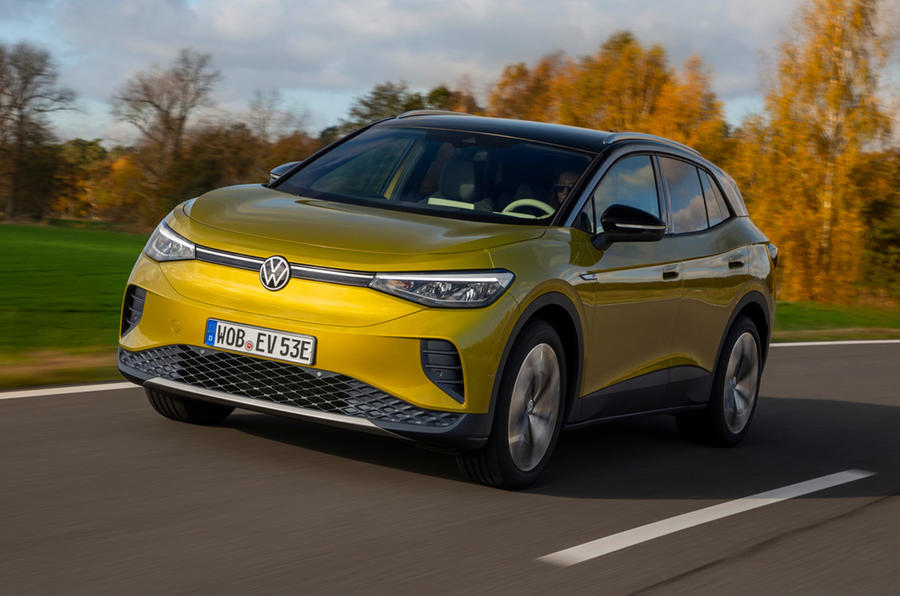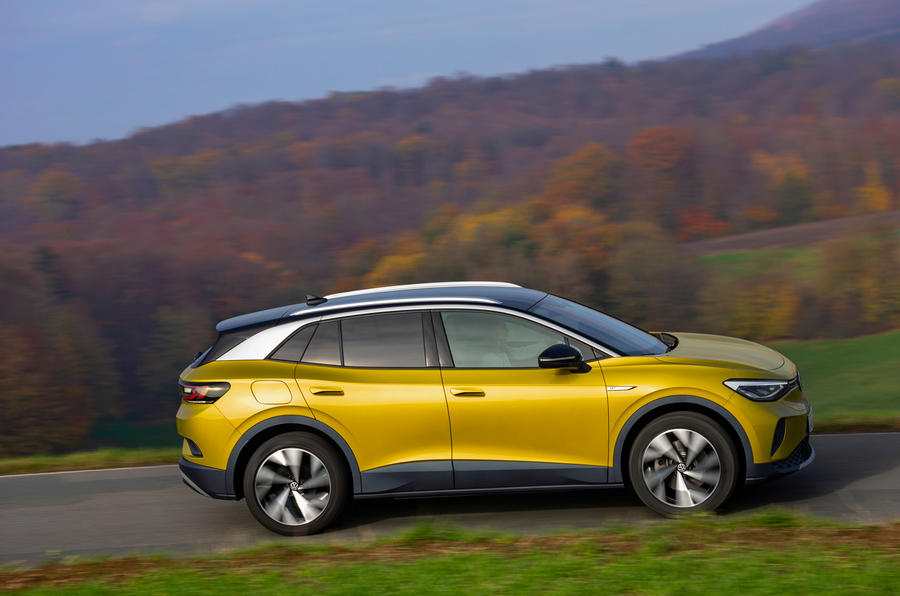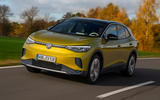What is it?
The new ID 4 is where Volkswagen’s ambitions for global EV sales leadership really begin to take shape. Due to be produced in four manufacturing plants on three continents, the new crossover-style SUV is seen by officials of the German car maker very much as a world car in the mould of the original Beetle and its successor, the Volkswagen Golf.
Following the smaller ID 3 hatchback, with which it shares its MEB platform, the second model from Volkswagen’s ID electric car sub-brand will initially be sold in the UK from February 2021 in single-motor, rear-wheel-drive guise. However, a more powerful, dual-motor, four-wheel-drive model, which is set to usher in the new GTX performance car nomenclature to be used by a number of future ID models, is also due to be added to line-up next April.
The contemporary styling of the ID 4, with its full-width light bands front and rear, will be familiar to anyone who has followed Volkswagen’s carefully choreographed entry into the electric car ranks. It takes the smooth-surfaced appearance of the ID Crozz concept, first wheeled out at the 2017 Shanghai motor show, into production with only minor changes.
It is a modern-looking car with short bonnet proportions unlike any existing Volkswagen SUV and large wheel houses that allow it to accommodate wheels ranging from a standard 18in up to 21in in diameter.
At 4584mm long, 1852mm wide and 1612mm tall, the new Volkswagen model is 75mm longer, 13mm wider and 63mm taller than the standard-wheelbase Volkswagen Tiguan. Its 2766mm wheelbase is the same as that used by the ID 3 and 88mm longer than the Tiguan's.
The drag co-efficient, meanwhile, is well below that of the Tiguan, at 0.28, aided by the almost totally enclosed front end and, on the model tested here, aerodynamically optimised wheel design.
Power comes from a rear-mounted electric motor known as the APP 310 and assembled at Volkswagen’s components plant in Kassel, Germany. It is the same synchronous unit used by the ID 3, offering three levels of power, starting at 146bhp and ranging through 168bhp to the 201bhp of the 1st Max specified version tested here – all with the same 228lb ft of torque.
This compares with the 282bhp and 295lb ft of the rear-wheel-drive BMW iX3 and 201bhp and 295lb ft of the range-topping front-wheel-drive Hyundai Kona Electric.
Drive is sent to the rear wheels through a single-speed gearbox attached to the side of the motor, with an electronic differential providing a torque-vectoring function that varies the amount of drive sent to each individual rear wheel for improved traction and more neutral handling during all-out cornering.
The electric motor is fed by one of two available lithium ion batteries. The 146bhp and 168bhp models come with a 52kWh unit weighing 344kg, while the 201bhp model uses a larger 77kWh battery that weighs a rather substantial 493kg.
The latter is good for a WLTP range of up to 324 miles, according to Volkswagen. It comes as standard with an 11kW on-board charger, although it can support charging at up to 125kW, allowing a 199-mile extension in range within 30min on a high-powered DC system.





























Join the debate
Add your comment
£59,950? Can't you buy an E-tron for that money. Pretty certain you can get a BMW IX3. The ID4 has the same interior to an ID3 which starts around £30k. I think VW has really developed some great electric cars. Harry's Garage review of ID3 was very favourable. I think with the heavy discounts VW is offering, the ID3 will break through. But the pricing of this ID4 is incredible. For that money I wouldn't want a white plastic dash.
why do i keep getting this for no reason: Your submission has been rejected due to our spam control rules. Please note that embedded links are not allowed in comments.
Interior looks like one of those coin operated rides at the mall. Drum brakes. Ridiculous price. Sounds like anothe 4 star VW, then.